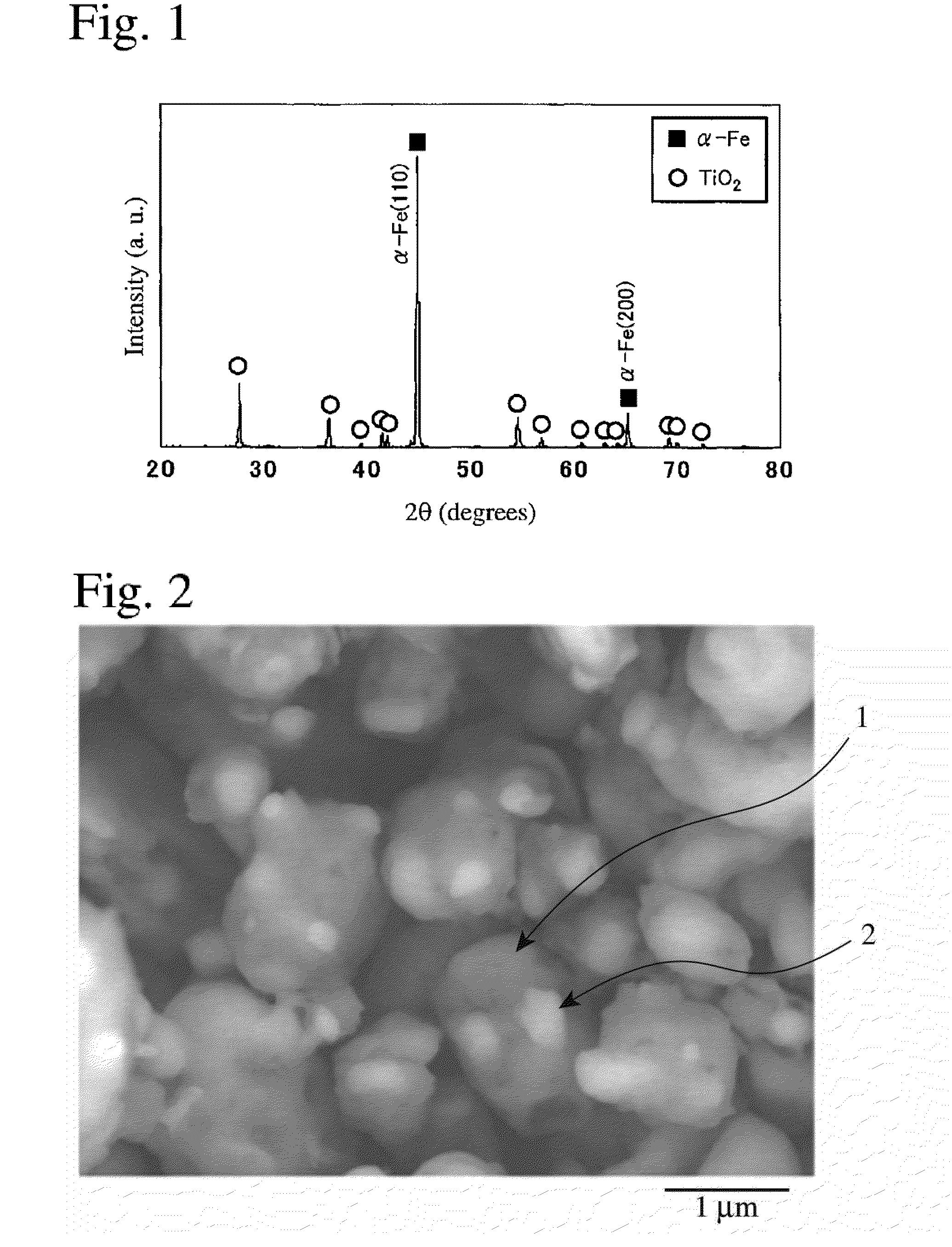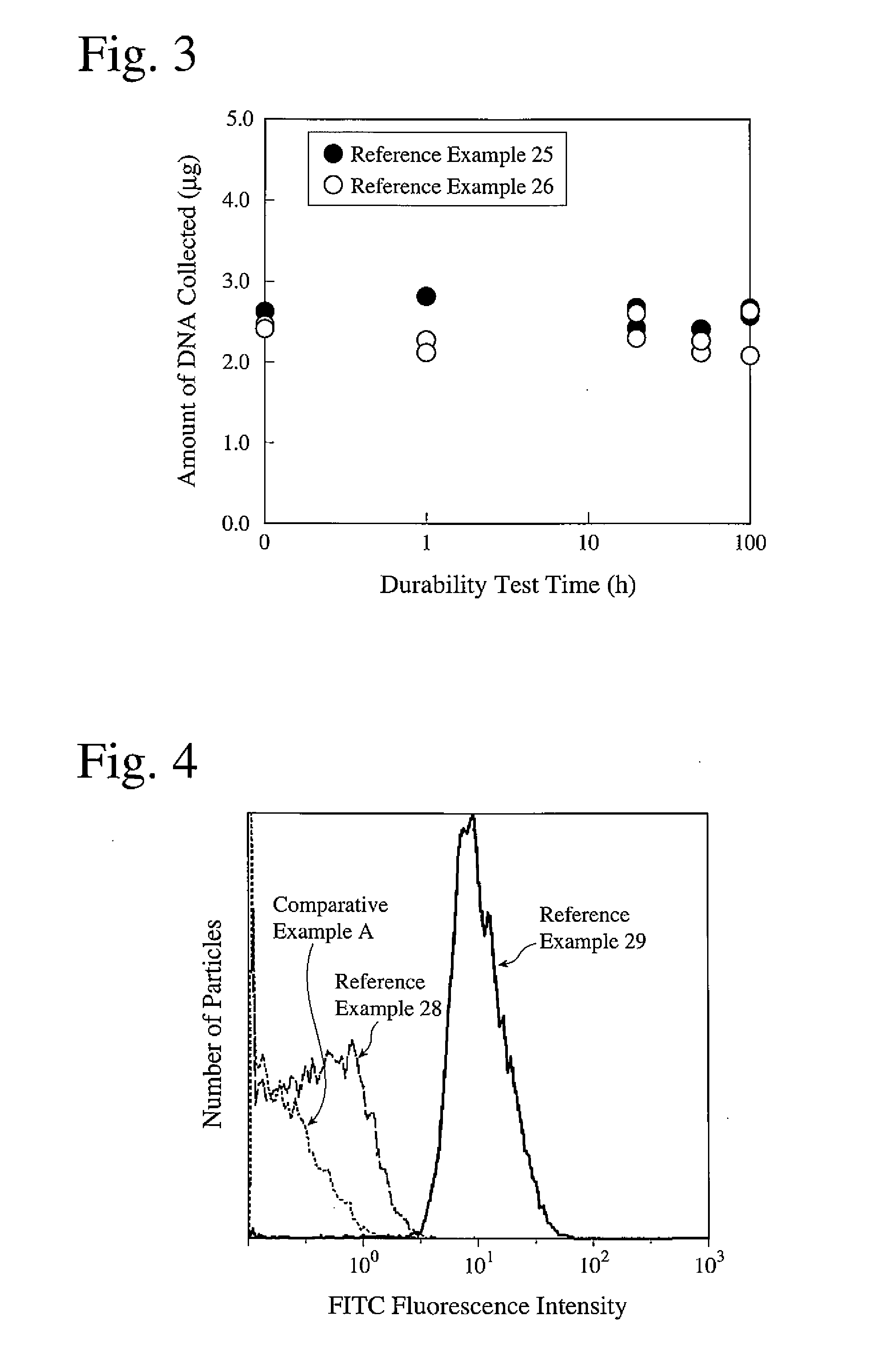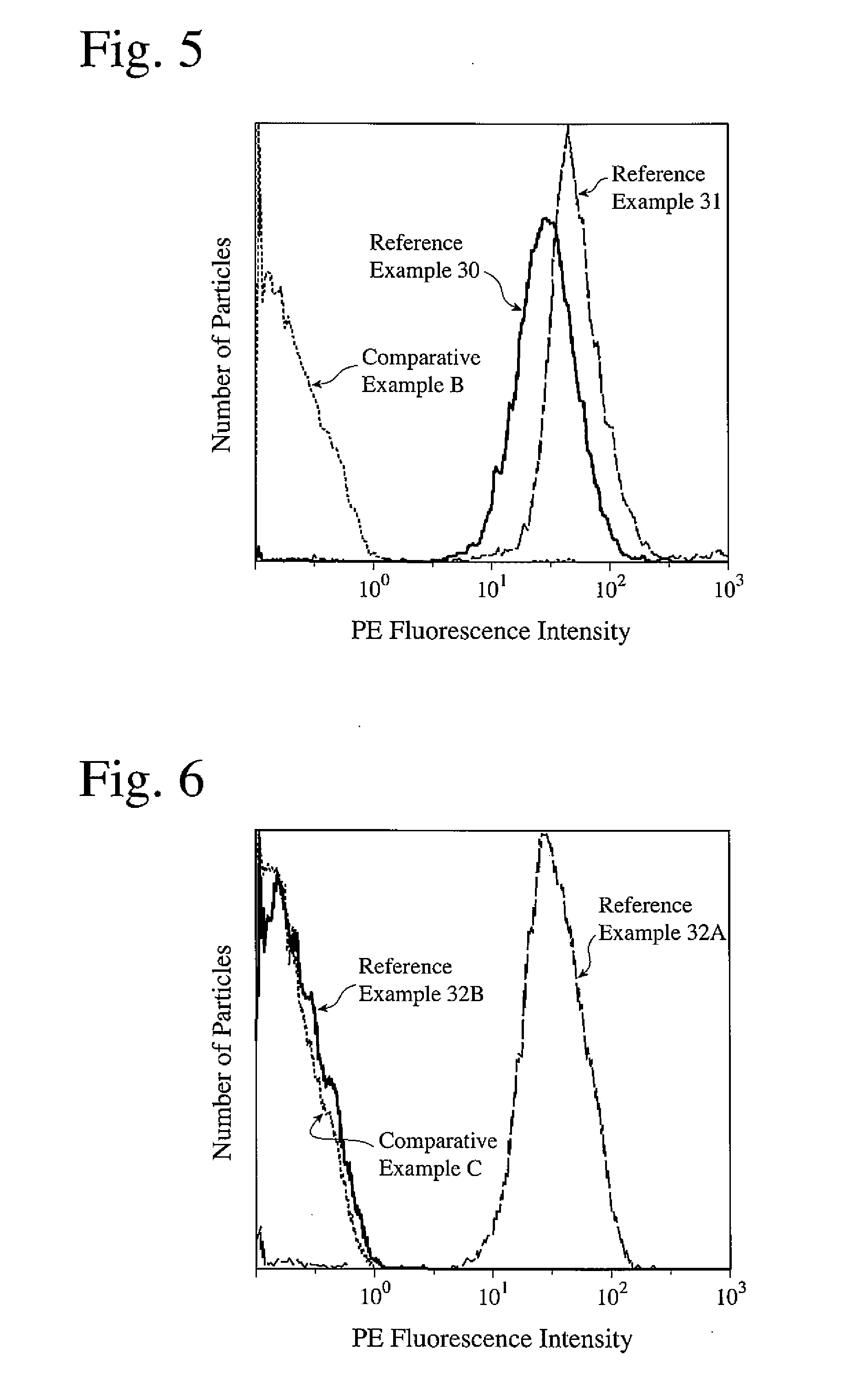Coated, fine metal particles and their production method
a technology of fine metal particles and production methods, applied in the field of coating, fine metal particles and their production methods, can solve the problems of low production efficiency, difficulty in dry handling, easy oxidation of fine metal particles, etc., and achieve excellent corrosion resistance and high magnetization
- Summary
- Abstract
- Description
- Claims
- Application Information
AI Technical Summary
Benefits of technology
Problems solved by technology
Method used
Image
Examples
reference example 1
[0094]α-Fe2O3 powder having a median diameter of 0.03 μm and TiC powder having a median diameter of 1 μm were mixed at a mass ratio of 7:3 for 10 hours by a ball mill, and the mixed powder was heat-treated at 700° C. for 2 hours in a nitrogen gas in an alumina boat. The X-ray diffraction pattern of the resultant powder sample is shown in FIG. 1. In FIG. 1, the axis of abscissas represents a diffraction angle 2θ(°), and the axis of ordinates represents diffraction intensity (relative value). Analysis with software “Jade, Ver.5” available from MDI revealed that it had diffraction peaks assigned to α-Fe and rutile TiO2.
[0095]Calculation from the half width of a (200) peak of α-Fe using a Scherrer's equation revealed that Fe had an average crystallite size of 90 nm. The maximum diffraction peak of TiO2 obtained at 2θ=27.5° had a half width of 0.14, and an intensity ratio of the maximum diffraction peak of TiO2 to the maximum diffraction peak [(110) peak] of α-Fe was 0.18. This verifies ...
reference examples 2-5
[0099]Powder samples were produced and purified to obtain magnetic particles in the same manner as in Reference Example 1, except for changing the mass ratio of α-Fe2O3 powder to TiC powder as shown in Table 1. The compositions and magnetic properties of these magnetic particles were measured in the same manner as in Reference Example 1. The results are shown in Table 1.
[0100]The magnetic particles of Reference Example 5, in which a mass ratio of α-Fe2O3 powder to TiC powder was 4 / 6, had high corrosion resistance, saturation magnetization Ms of 48 Am2 / kg, lower than 50 Am2 / kg, and coercivity iHc of 18 kA / m, more than 15 kA / m. It is thus clear that the TiC content is preferably 30-50% by mass to keep high saturation magnetization without losing the properties of metal Fe particles.
TABLE 1Mass RatioMass RatioMagnetic PropertiesNo.of Fe2O3 / TiC(1)of Fe / Ti(2)Ms (Am2 / kg)iHc (kA / m)Reference7 / 371 / 291303.8Example 1Reference6.5 / 3.566 / 341166.2Example 2Reference6 / 460 / 401038.5Example 3Reference5...
reference example 6
[0101]Coated, fine, magnetic metal particles were obtained in the same manner as in Reference Example 1 except that the heat treatment temperature was 800° C. The magnetic properties of this powder sample were measured in the same manner as in Reference Example 1. The C content in the powder sample was measured by a high-frequency-heated infrared absorption method using “EMIA-520” available from HORIBA, and the N content was measured by a heat conduction method in which heating was conducted in an inert gas, using “EMGA-1300” available from HORIBA. The results are shown in Table 2.
PUM
| Property | Measurement | Unit |
|---|---|---|
| particle size | aaaaa | aaaaa |
| particle size | aaaaa | aaaaa |
| temperature | aaaaa | aaaaa |
Abstract
Description
Claims
Application Information
 Login to View More
Login to View More - R&D
- Intellectual Property
- Life Sciences
- Materials
- Tech Scout
- Unparalleled Data Quality
- Higher Quality Content
- 60% Fewer Hallucinations
Browse by: Latest US Patents, China's latest patents, Technical Efficacy Thesaurus, Application Domain, Technology Topic, Popular Technical Reports.
© 2025 PatSnap. All rights reserved.Legal|Privacy policy|Modern Slavery Act Transparency Statement|Sitemap|About US| Contact US: help@patsnap.com



